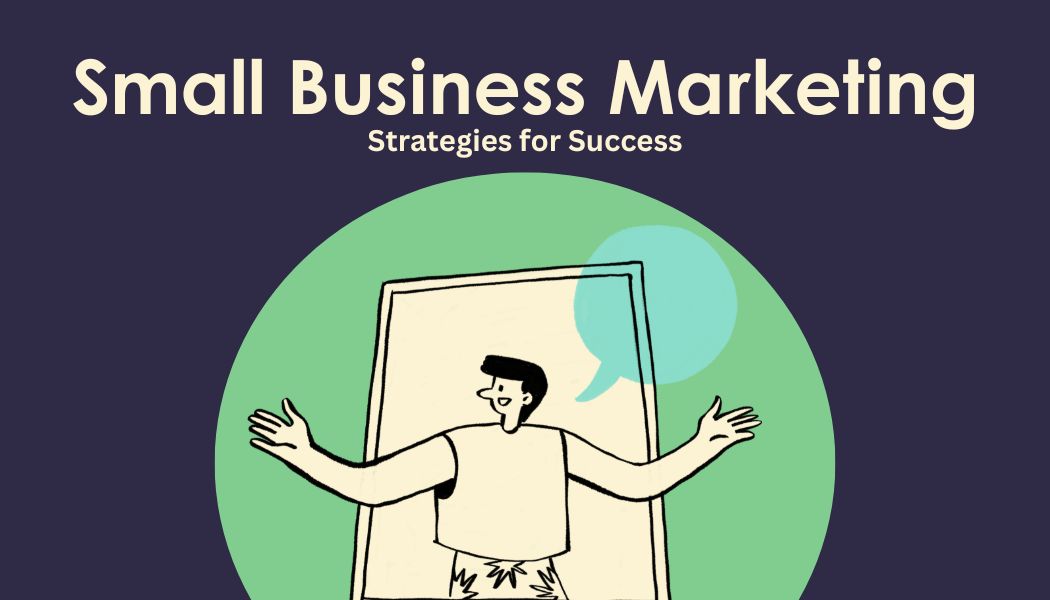
Marketing a small business can be challenging, especially with limited resources and stiff competition. However, with the right strategies and a bit of creativity, you can effectively promote your business and attract new customers. In this blog post, we’ll explore various marketing techniques tailored for small businesses to help you achieve your goals.
1. Define Your Target Audience
The first step in any marketing strategy is to understand who your ideal customers are. Knowing your target audience allows you to tailor your marketing efforts to meet their needs and preferences. Here are some steps to define your target audience:
- Analyze Your Current Customer Base: Look at your existing customers and identify common characteristics such as age, gender, location, and buying behavior.
- Create Buyer Personas: Develop detailed profiles of your ideal customers, including their demographics, interests, and pain points.
- Conduct Market Research: Use surveys, interviews, and market analysis to gather data about potential customers and their preferences.
2. Develop a Strong Brand Identity
Your brand identity is the visual and emotional representation of your business. It includes your logo, color scheme, typography, and the overall tone of your messaging. A strong brand identity helps you stand out from the competition and creates a memorable impression on your customers. Here are some tips for developing a strong brand identity:
- Design a Professional Logo: Your logo should be simple, memorable, and reflective of your business values.
- Choose Consistent Colors and Fonts: Use a consistent color palette and typography across all your marketing materials to create a cohesive look.
- Craft a Unique Value Proposition: Clearly articulate what makes your business unique and why customers should choose you over competitors.
3. Build an Engaging Website
In today’s digital age, having a professional and user-friendly website is crucial for any business. Your website serves as the online hub for your marketing efforts and provides potential customers with important information about your products or services. Here are some key elements of an effective website:
- Clear Navigation: Make it easy for visitors to find what they’re looking for with a simple and intuitive navigation menu.
- Mobile Optimization: Ensure your website is mobile-friendly, as many users access websites from their smartphones.
- Compelling Content: Provide valuable content that addresses your customers’ needs and showcases your expertise.
- Calls to Action (CTAs): Include clear and compelling CTAs to guide visitors toward taking desired actions, such as making a purchase or signing up for your newsletter.
4. Leverage Social Media
Social media platforms offer an excellent opportunity to connect with your audience, build brand awareness, and drive traffic to your website. Here are some strategies to effectively use social media for your small business:
- Choose the Right Platforms: Focus on the social media platforms that are most popular with your target audience. Common options include Facebook, Instagram, Twitter, and LinkedIn.
- Create Engaging Content: Share a mix of content types, such as blog posts, videos, infographics, and customer testimonials, to keep your audience engaged.
- Interact with Your Audience: Respond to comments and messages, and engage with your followers by liking and sharing their content.
- Run Paid Ads: Use targeted advertising to reach a wider audience and drive traffic to your website or landing pages.
5. Utilize Email Marketing
Email marketing is a powerful tool for nurturing leads and maintaining customer relationships. It allows you to deliver personalized content directly to your audience’s inbox. Here are some tips for effective email marketing:
- Build an Email List: Collect email addresses through your website, social media, and in-store promotions. Offer incentives such as discounts or free resources to encourage sign-ups.
- Segment Your Audience: Divide your email list into segments based on factors such as demographics, purchase history, and engagement levels. This allows you to send targeted and relevant content.
- Create Valuable Content: Provide valuable information, promotions, and updates that resonate with your audience and encourage them to take action.
- Track and Analyze Results: Monitor your email marketing performance using metrics such as open rates, click-through rates, and conversion rates. Use this data to refine your strategy.
6. Invest in Content Marketing
Content marketing involves creating and sharing valuable content to attract and engage your target audience. It helps establish your business as an authority in your industry and drives organic traffic to your website. Here are some content marketing strategies:
- Start a Blog: Regularly publish blog posts that address your audience’s pain points and provide solutions. Optimize your posts for search engines (SEO) to increase visibility.
- Create Video Content: Video is a highly engaging content format that can be used for tutorials, product demonstrations, customer testimonials, and more.
- Offer Free Resources: Create downloadable resources such as e-books, guides, and checklists that provide value to your audience and generate leads.
- Guest Blogging: Write guest posts for other reputable blogs in your industry to reach a broader audience and build backlinks to your website.
7. Network and Collaborate
Networking and collaboration can open up new opportunities for your business and help you reach a wider audience. Here are some ways to network and collaborate effectively:
- Attend Industry Events: Participate in conferences, trade shows, and networking events to connect with potential customers, partners, and industry influencers.
- Join Professional Associations: Become a member of industry associations and groups to stay informed about industry trends and build relationships with other professionals.
- Collaborate with Other Businesses: Partner with complementary businesses to co-host events, offer bundled promotions, or cross-promote each other’s products or services.
8. Monitor and Adapt Your Strategy
Marketing is an ongoing process that requires continuous monitoring and adaptation. Regularly assess the performance of your marketing efforts and make adjustments as needed. Here are some tips for monitoring and adapting your strategy:
- Set Clear Goals: Establish specific, measurable, achievable, relevant, and time-bound (SMART) goals for your marketing efforts.
- Track Key Metrics: Monitor key performance indicators (KPIs) such as website traffic, social media engagement, email open rates, and conversion rates.
- Analyze Data: Use analytics tools to gain insights into your audience’s behavior and preferences. Use this data to refine your strategy and improve results.
- Stay Informed: Keep up with industry trends and best practices to ensure your marketing efforts remain relevant and effective.
Conclusion
Marketing your small business requires a strategic approach and a willingness to adapt to changing circumstances. You can effectively promote your business and achieve long-term success by defining your target audience, building a strong brand identity, leveraging digital marketing channels, and continuously monitoring your efforts. Remember, the key to successful marketing is understanding your customers’ needs and providing value through every interaction. Happy marketing!
Not ready to do it on your own
The QuickBooks Guy offers not just bookkeeping services but a partnership in your financial journey. With a deep understanding of QuickBooks and a commitment to personalized service, ‘The QuickBooks Guy’ is your ally in navigating the complexities of financial management. By choosing us, you ensure that your business’s financial health is in capable hands, allowing you to focus on growing your business.
Don’t let bookkeeping challenges hold you back any longer. Reach out today at 678-923-5904 or drop an email to TheQuickBooksGuy@gmail.com.




